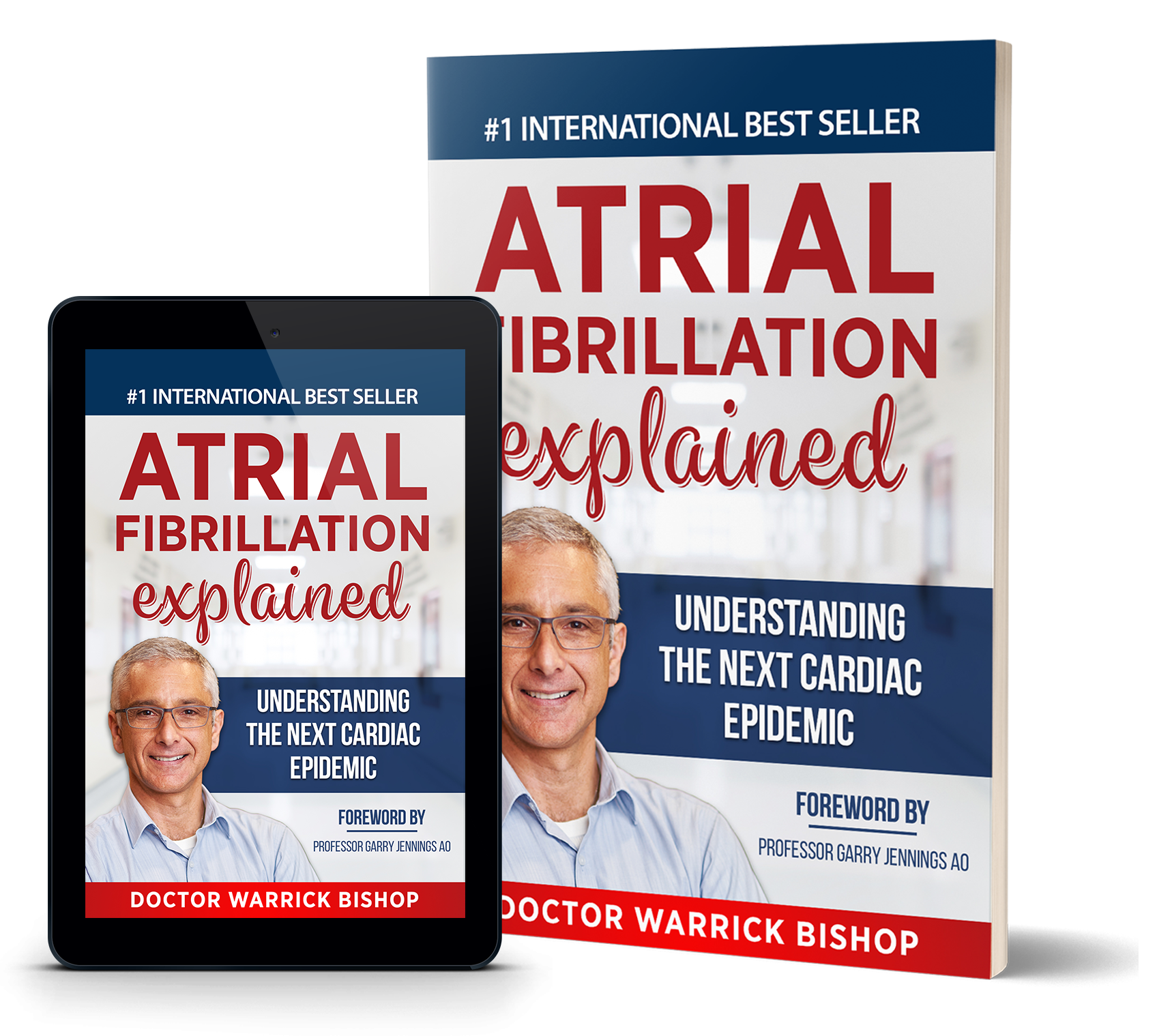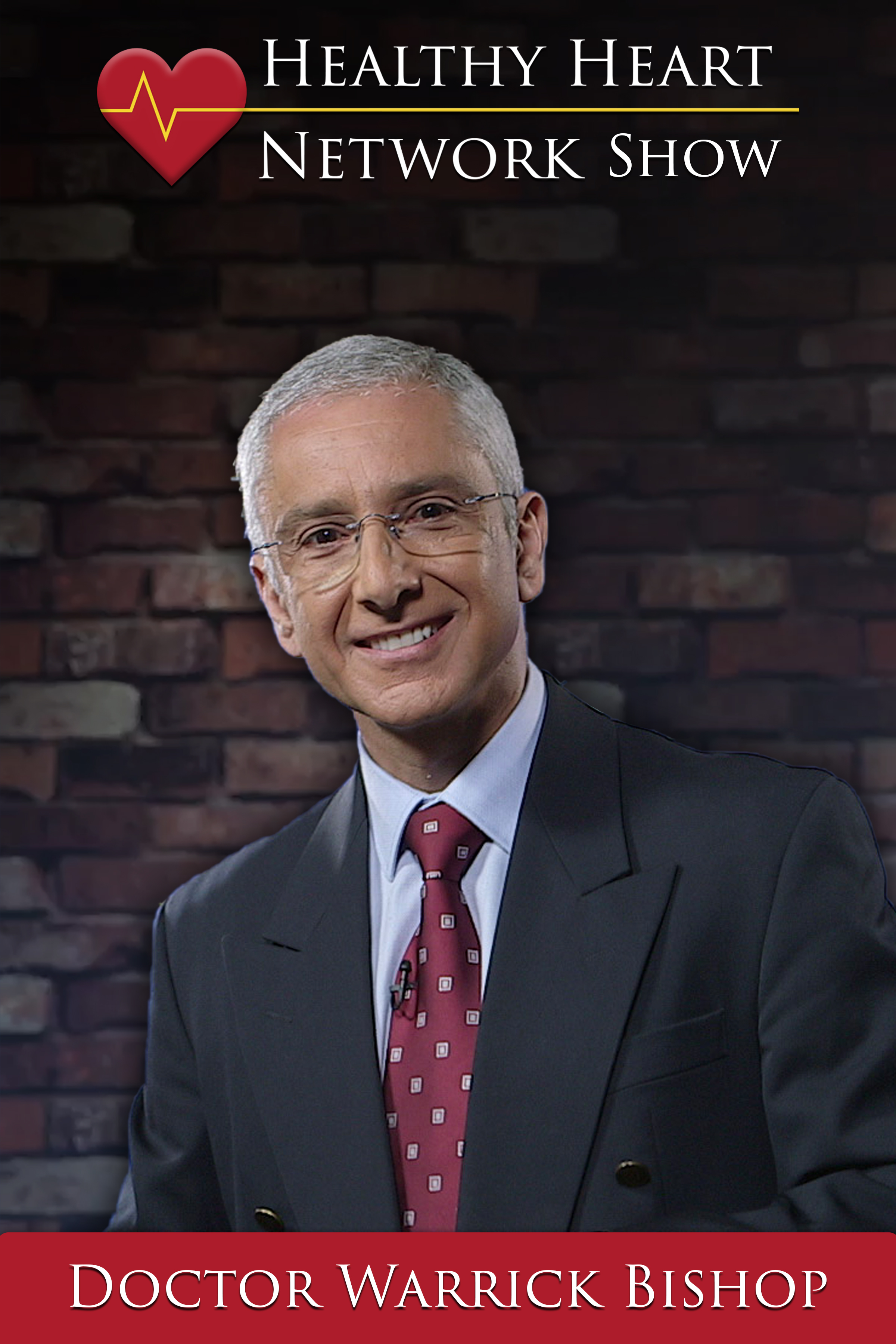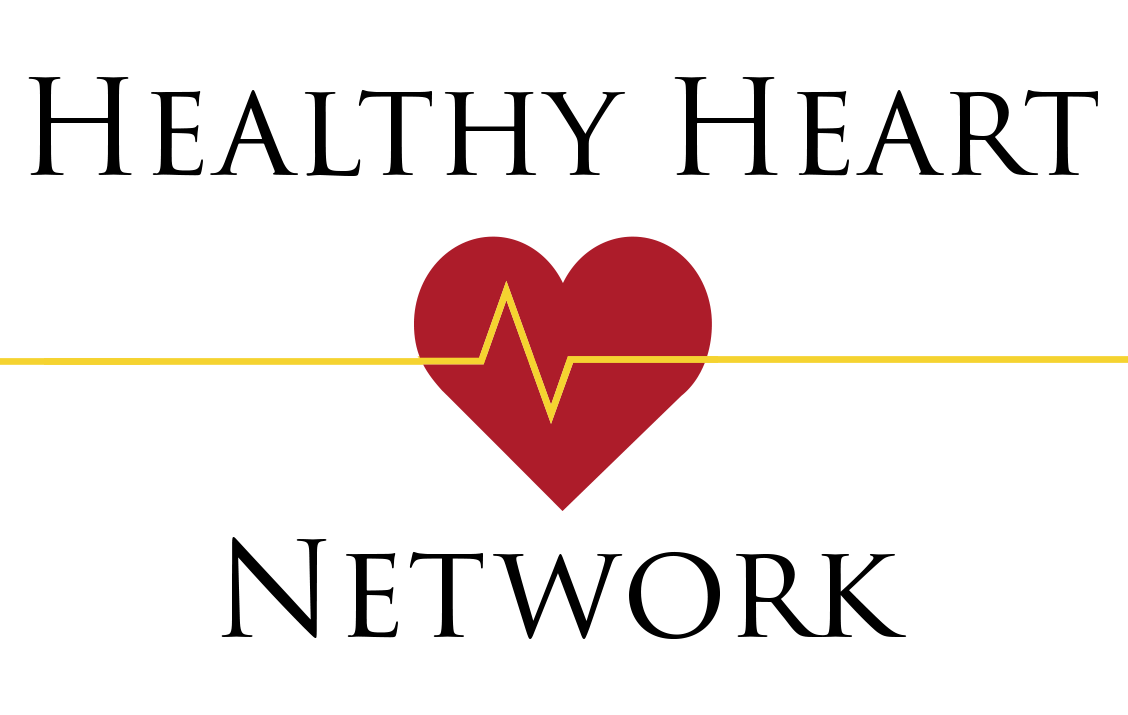JOIN OUR HEALTHY HEART MEMBERSHIP HERE: https://healthyheartnetwork.com/page/starter
Welcome to Doctor Warrick's Podcast Channel.
Warrick is a practicing cardiologist and author with a passion for improving care by helping patients understand their heart health through education. Warrick believes educated patients get their best health care. Discover and understand the latest approaches and technology in heart care and how this might apply to you or someone you love.
Hi, my name's Dr. Warrick Bishop, and I'd like to welcome you to my consulting room. Today I'd like to speak a little bit about how we keep you in normal rhythm if you've had atrial fibrillation. Normally we have to make that decision to try and keep a normal rhythm based on a couple of things. First of all, we would be trying to keep normal rhythm if, in atrial fibrillation, you are getting unacceptable symptoms. We would also tend to try and keep you in normal rhythm the younger you are. That makes sense because, if you're quite elderly, then the time you'll spend in atrial fibrillation is less. If you're quite young, then it's liable you'll spend a long time in atrial fibrillation, potentially with those symptoms.
Lastly, we'd also want to look at the structure of the heart and in particular the structure of the left atrium. This is really important because the left atrium seems to be very important in recurrence of atrial fibrillation. If the size of the left atrium is large and capacious and dilated, then it's going to be very hard for that atrium to keep normal rhythm in the long term. On the flipside of course, if the heart looks structurally normal and the atria appear to be of normal size, then the chances of keeping someone in normal rhythm after atrial fibrillation are much increased. It's really important we don't forget the aims of treatment in maintaining normal sinus rhythm when we're undertaking that. And this will be something that your specialist will be making decisions about based on your specific situation and needs.
The main principles we keep in mind though are the following. There are six. First of all, we're looking to keep people in normal rhythm because of symptoms and we want to reduce their symptom load so that they feel better. Secondly, we understand that our treatments are effectively moderate in terms of their impact most of the time. So we rarely have a perfect cure. Three, that we accept that we're looking to reduce the recurrence rate and the time that people are in atrial fibrillation. Remember we're looking to reduce rather than to unnecessarily cure. Fourthly, that if we're dealing with one agent, one therapeutic maneuver, then it is quite possible we may need to add in another therapy, or we may need to swap therapies to achieve some reduction in atrial fibrillation for the individual. Five, we need to bear in mind that our agents and medications can be of their own pro-arhythmic. And that means that they can generate rhythms of their own and this can be a problem. Lastly, with that in mind, we always need to be making sure that we're balancing safety with the effectiveness of our therapy.
So, what are the simple steps that we undertake or what's the progression we undertake in trying to maintain sinus rhythm or normal rhythm in a person who has had atrial fibrillation? Well, first of all, the most simple and important thing to do is to address the reversible factors. If the patient is markedly overweight or significantly overweight, we immediately want to try and improve that. We know that weight has an impact on the way atrial fibrillation will recur and very importantly, weight has a big impact on obstructive sleep apnea or pausing breathing while asleep at night. So if this obstructive sleep apnea is present, we want to be addressing that because the heart comes under a significant load in the middle of the night if oxygen isn't getting into the body properly. So weight, obstructive sleep apnea are important reversible factors we want to address.
Further to that, If alcohol is central to the precipitation of atrial fibrillation, we, of course, would want to address that as well and encourage the patient to understand how their alcohol intake can be impacting their recurrence of atrial fibrillation. We would also check blood pressure. We'd want to check thyroid function. We'd want to try and encourage the patient to exercise if they had other conditions like diabetes. We would want to maximally manage that. If we've addressed the reversible factors and the lifestyle factors, then we can add in medications.
My own practice is to use betablockers as a first line. These are so broadly and commonly available they seem on the whole to be very well-tolerated. A number of guidelines don't necessarily support betablockers for maintaining sinus rhythm but certainly clinically I see, over and over, patients who get long symptom-free periods using beta blockade. These are great drugs, they're pretty safe. They seem pretty effective in a good range of people, particularly those who have some emotion or anxiety triggers that can kick off their atrial fibrillation. For those people where beta blockers are not ideal, I will often use a calcium channel blocker and particularly in some patients who are getting a lot of extra atrial beats on their EEG or monitoring. For some reason, the extra atrial beat patients seem to respond very well to verapamil, at least in my observation. Again, current guidelines; European and Australian; don't necessarily support this as a maneuver for maintenance of sinus rhythm. But I certainly see in my own practice suggestion that this can be beneficial.
If calcium channel blockers and beta blockers are not working or poorly-tolerated, I might add in flecainide. Generally, I will use flecainide with a little bit of beat a blockade and use a combination hoping to get some effectiveness from both agents without pushing either agent too hard, which would raise the possibility of side effect. If I decide to use flecainide without a beta blocker or calcium channel blocker, I will often use it with a bit of digoxin and this is because we know that flecainide can increase the conduction of electricity through the AV node and if it increases the conduction of electricity through the AV node, it may increase the rate responsiveness of the atrial fibrillation for that individual should they go back into AF.
So I put a bit of digoxin into the mix so that that break is there as a safety just in case the patient returns to atrial fibrillation. Agents like amiodarone can also be used dronedarone can also be used. These are agents that are more complex, if you like, anti-arhythmic agents. They are more powerful. They're the next step. Together with that is an agent called Sotalol. These agents do need to be closely monitored and some regular ECGs to measure different components of the ECG are an important part of management.
Lastly, in my own practice for younger patients who are quite symptomatic from atrial fibrillation who have a fairly normal-looking heart, if they've been controlled perhaps on a beta blocker plus say flecainide or we're progressing to the stage where we might need amiodarone or Sotalol for those patients in the longer term, then I would next look to consider ablation of atrial fibrillation using electrophysiological technologies. This is a way to modify the atria in such a way that we alter the threshold of atrial fibrillation and we raise the threshold to development of it again. My own experience is that this is a really good way of helping us getting ongoing management and maintenance of sinus rhythm in the longer term. It's really important to understand that EP ablation is not a cure. It's not a magic bullet. It doesn't cut out the bit that is atrial fibrillation, but it does make atrial fibrillation harder to develop in the patient and it can buy up to several years, at least, of symptom-free Sinus rhythm. In my own practice, I tend to combine it with a small dose of something like a beta blocker or calcium channel blocker but atrial fibrillation ablation is a terrific supportive technique for helping us maintain sinus rhythm in the longer term in very selected individuals.
I hope that makes some sense. I hope you've enjoyed it. As always thank you for joining me and I wish you good health. Goodbye.
You have been listening to another podcast from Dr. Warrick. Visit his website at www.drwarrickbishop.com for the latest news on heart disease. If you love this podcast, feel free to leave us a review.
Check out my book at http://drwarrickbishop.com/books/









